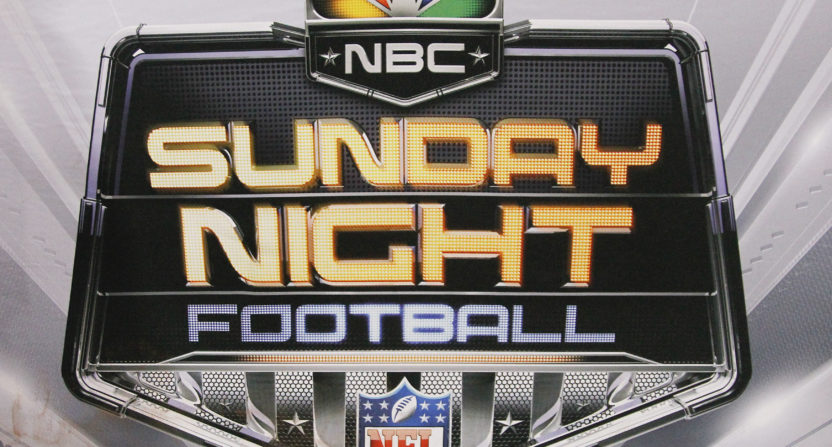For one reason or another (or, most likely, a complex combination of reasons), America is not watching the NFL like it used to.
For the past two years, NFL ratings and viewership totals have conspicuously slipped, amid heated debate over causes. On Thursday, Sports Business Journal’s Austin Karp reported some numbers that should provide ammo to anyone pushing an explanation for pro football’s decline in TV popularity.
Per Karp, NBC’s Sunday Night Football drew its worst average viewership since 2008 this season, while ESPN’s Monday Night Football netted its lowest average viewership since ESPN got the package in 2006.
NBC averaged 18.2 million TV-only viewers this season for "Sunday Night Football" package, which is its lowest figure since 2008. Could still be TV's primetime king though. More details in SBD on Friday.
— Austin Karp (@AustinKarp) December 28, 2017
ESPN also wrapped up 2017 averaging 10.8 million viewers for "Monday Night Football," which is the package's lowest figure on record. ESPN's previous low was 11.2 million in 2007. More in SBD tomorrow.
— Austin Karp (@AustinKarp) December 28, 2017
This news shouldn’t exactly be a surprise to anyone who has followed NFL ratings in 2017, but it’s still a jarring reminder of the league’s growing crisis.
The scary thing for the NFL and its rights-holders is that everyone has a different explanation for what’s causing the decline. Some of the explanations (such as over-saturation) might be correctable, some of them (player protests) might fade in relevance over time and some of them (football’s inherent danger, cord-cutting) are probably here to stay. It’s impossible to predict whether this viewership dip is a blip or an irreversible trend.
Another troublesome fact for the league: Rights for both MNF and SNF will hit the market early next decade. ESPN’s contract runs through 2021, while NBC’s deal runs through 2022. If viewership doesn’t turn around before then, the NFL will be stuck selling a product on decline and might not fetch the return it would like. Sports leagues and rights-holders are counting on bids from digital outlets like Amazon and Facebook, but would those companies really risk gobs of cash on lagging properties? And would TV networks bet big after years of watching viewership slip?
It’s far too early to write an obituary for the NFL as America’s favorite sport — SNF and MNF still rank among the most watched programs on broadcast TV and cable, respectively — but the ship sure appears headed in the wrong direction.
